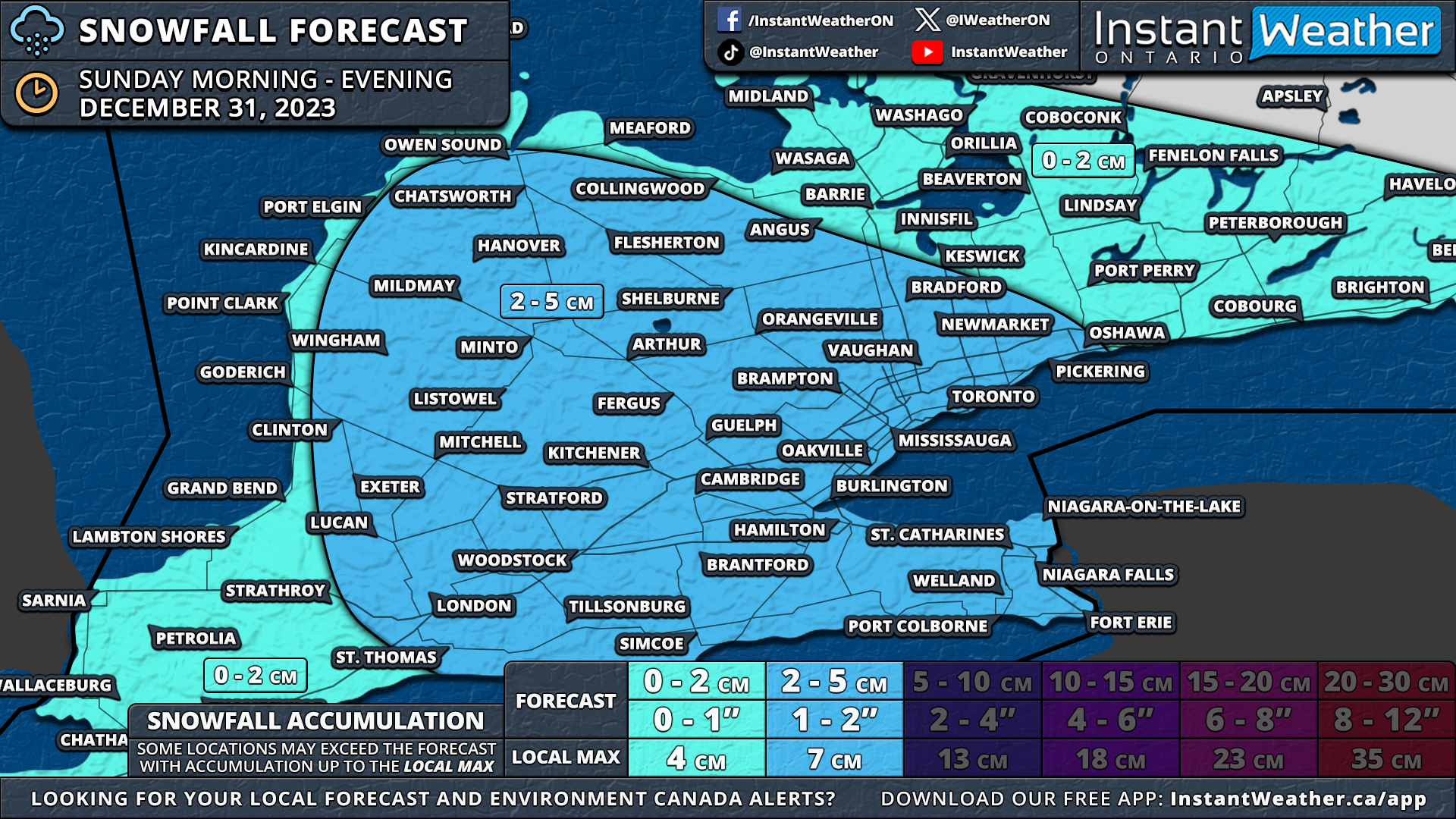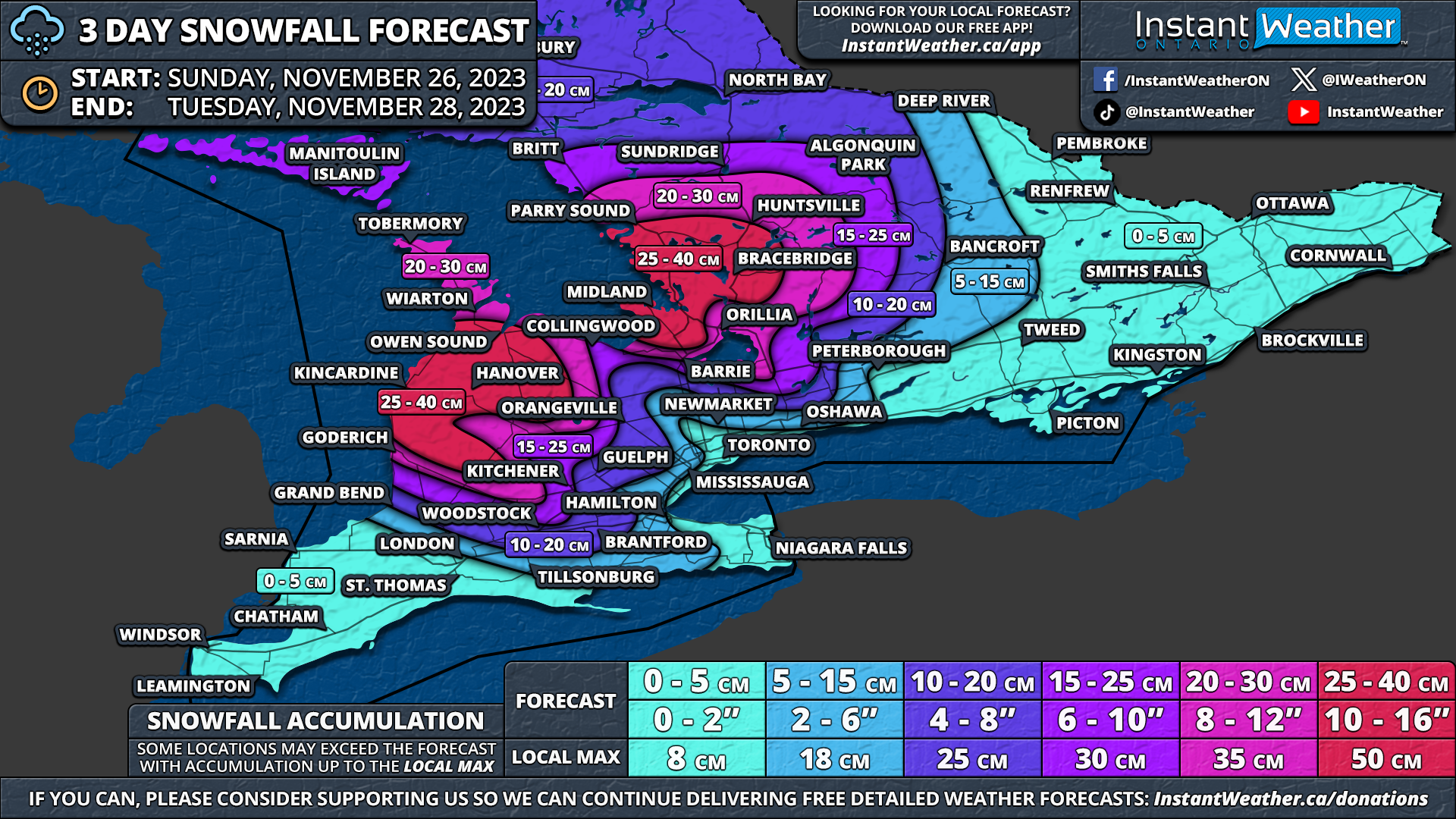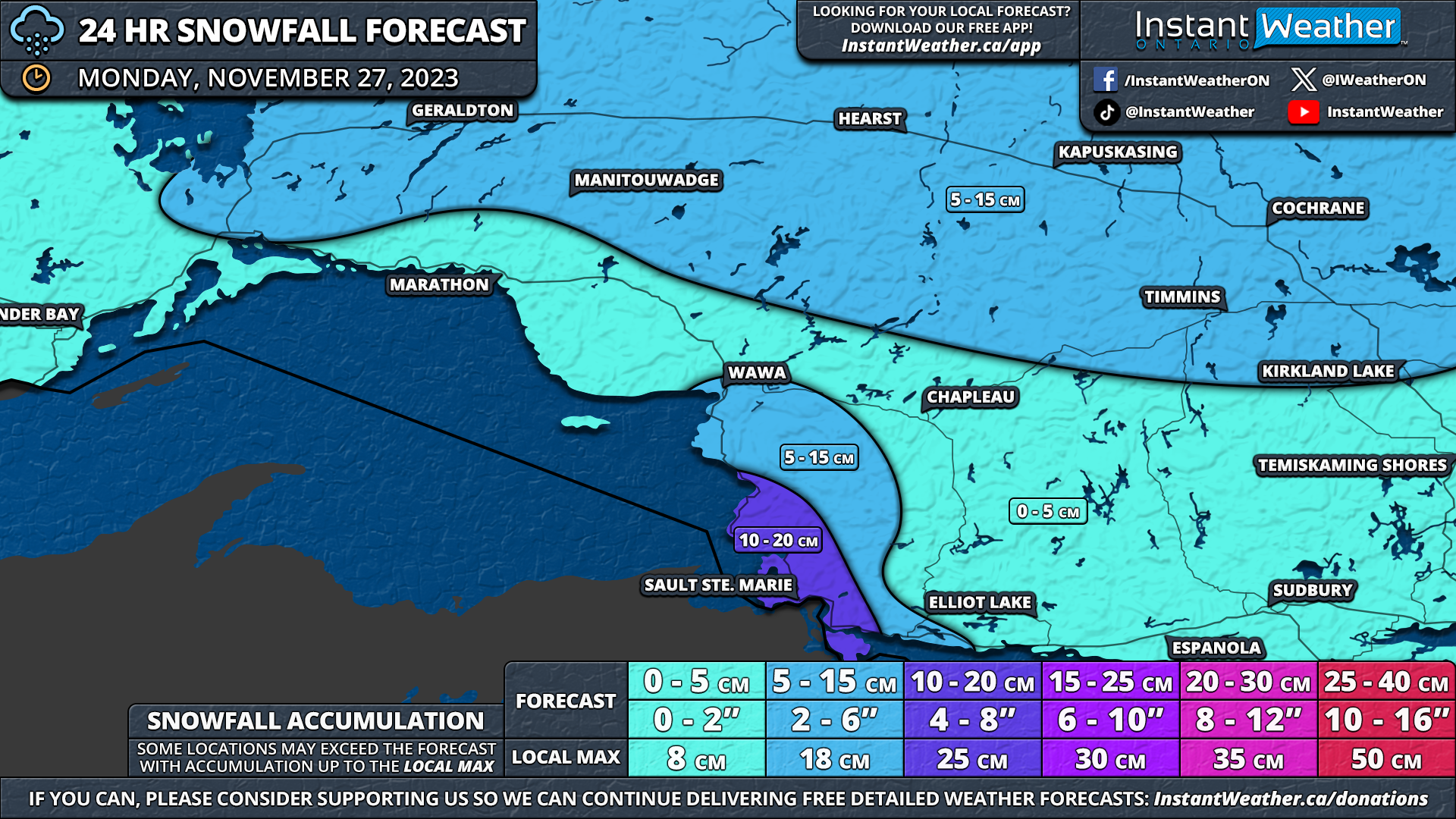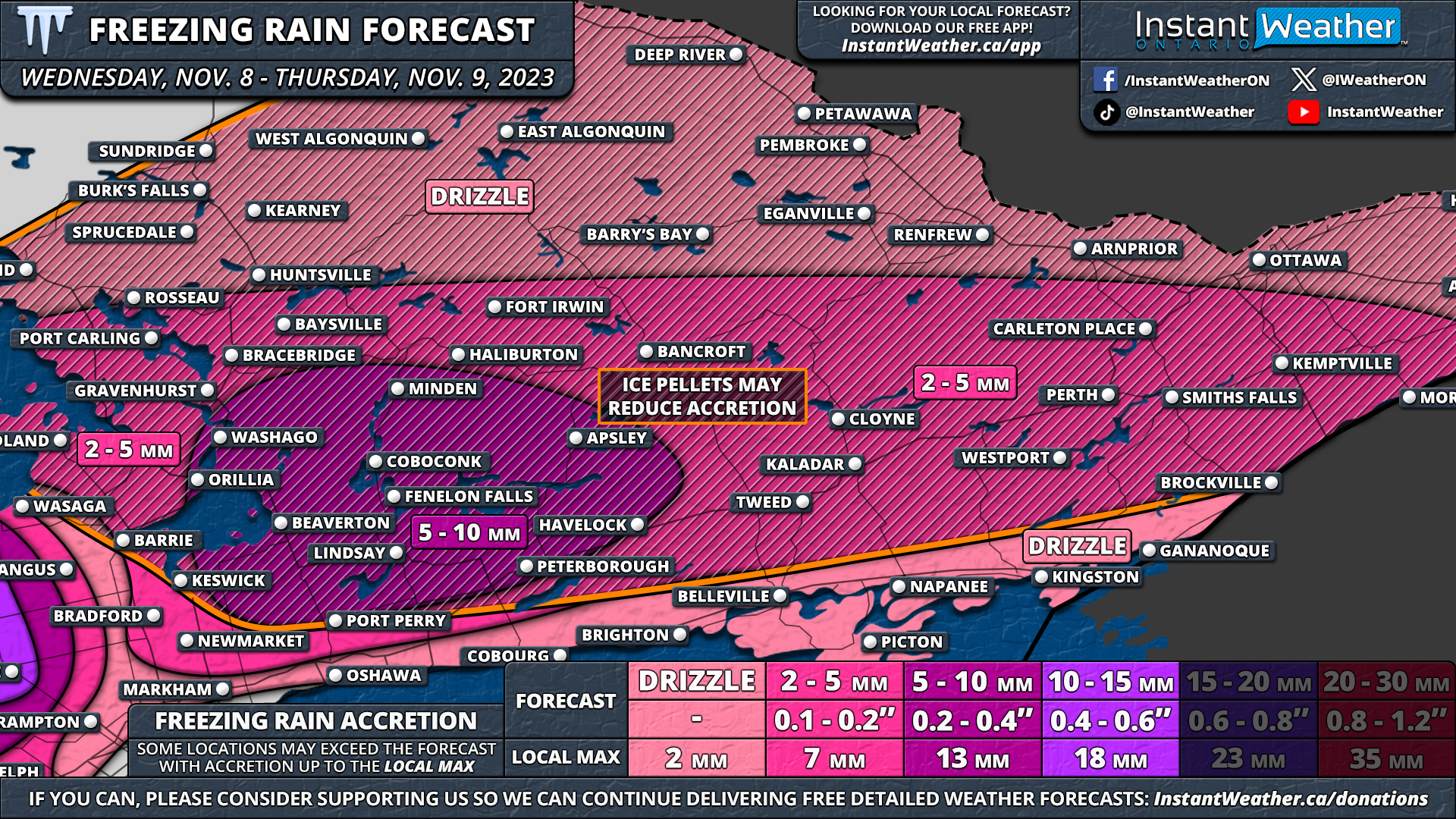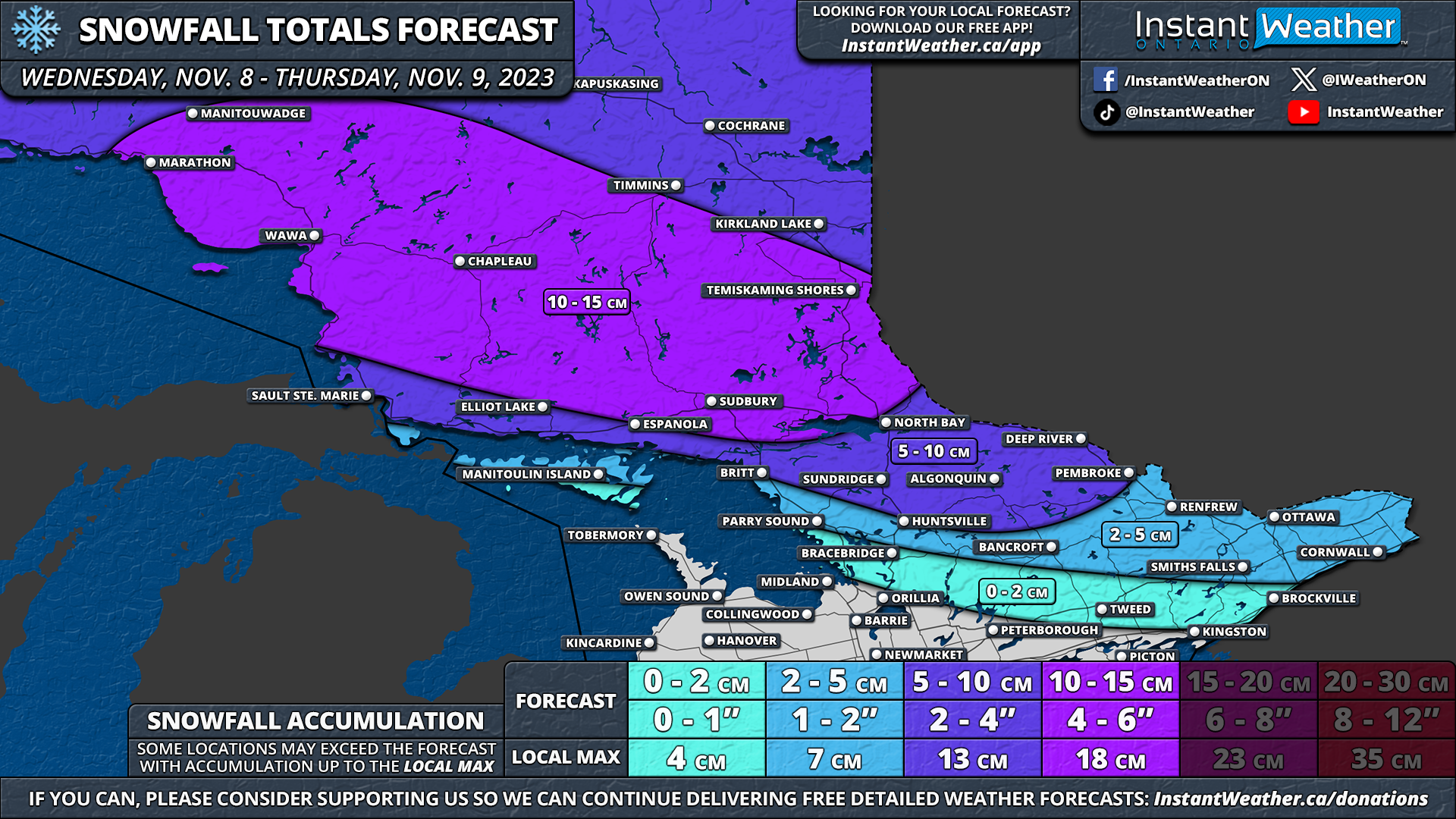Snowy End to the Year for Southern Ontario With Accumulating Snow on New Year’s Eve
/The final month of 2023 has brought some unusual weather to Southern Ontario, marked by unseasonably warm temperatures and persistent fog enveloping much of the region over the past week.
This warmth led to an exceptionally mild Christmas across Southern Ontario, dashing hopes for a ‘White Christmas’ in all but the northern parts of Central and Eastern Ontario.
As the year draws to a close, there has been a noticeable shift back to colder weather, with temperatures dropping to near or below freezing over the last 24 hours. While this seems like a return to normalcy, it's worth noting that these temperatures are still slightly above average for this time of year, which is typically the beginning of the coldest period of the year.
The cooling trend is accompanied by the potential for accumulating snow, courtesy of an Alberta Clipper moving across Southern Ontario on Sunday. This system is expected to deliver 2-4cm of snow to parts of Southwestern Ontario and the Golden Horseshoe, perfectly timed for the New Year's Eve countdown.
The snowfall will start late Saturday evening, initially light and possibly beginning as freezing drizzle, particularly east of Lake Huron. The drizzle should quickly give way to scattered flurries overnight.
By Sunday morning, we anticipate heavier snow bands moving in from the west, intensifying through the afternoon with snowfall rates of 1-2cm per hour, especially along the corridor from London through Kitchener to the Golden Horseshoe.
Steady snowfall is expected to continue into the evening, creating challenges for those travelling to New Year's Eve celebrations, with reduced visibility and slushy roads.
Due to the limited moisture associated with this clipper system, the snow should be contained to areas to the south of Lake Simcoe. This means that those in Central and Eastern Ontario likely won’t even see one snowflake from this system.
The snow is expected to taper off just before midnight, although flurries may persist into the early hours of 2024, ending by sunrise on Monday.
The highest snowfall totals from this event are expected to be found across parts of Southwestern Ontario and around the Golden Horseshoe. Those in locations including London, Kitchener, Hamilton, Niagara and the Greater Toronto Area (GTA) can expect total snow accumulation to generally range from 2 to 4cm.
Some localized pockets could see upwards of 4-6cm since the snowfall distribution will be quite uneven as the system moves through. While those closer to the shoreline of Lake Ontario and Erie could fall short of the 2cm mark due to slightly warmer temperatures close to the lake.
For those in Deep Southwestern Ontario and southern portions of Central Ontario, you are looking at some light flurries occurring on and off throughout the day on Sunday. For most regions, this won’t even lead to any accumulation but some could still see a light dusting with up to 2cm of accumulation.
As mentioned, those further north in Central and Eastern Ontario aren’t expected to see any snow from this system.
Looking towards the first week of 2024, it appears that the colder air is here to stick with us at least in the short term. This includes the potential for more rounds of snow throughout the week, but we aren’t expecting any significant accumulation at this point.
For those who enjoyed the mild start to winter, it looks like that is about to come to an end as we head back into more traditional winter-like weather for the start of the New Year.



